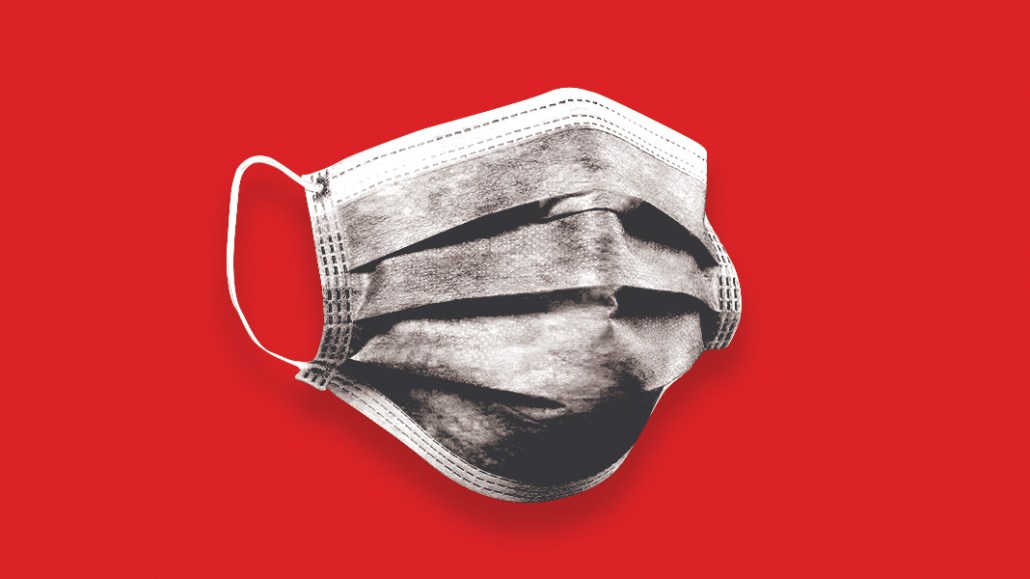Save 50% on a 3-month Digiday+ membership. Ends Dec 5.
Coronavirus climbs up keyword block lists, squeezing news publishers’ programmatic revenues

The media industry has braced for shocks to their ad revenues as the coronavirus ripples through the global economy. But publishers may have to deal with short-term pain too, as brands and platforms add terms associated with the disease to their keyword block lists.
In February, “coronavirus” became the second-most common word on block lists for news publishers, up from eighth-most common in January, according to Integral Ad Science data (The number one most-common was — you guessed it — “Trump”). Across the open web, Coronavirus was the third-most common block list entry in February, after not even ranking in the top ten in January, IAS data showed. YouTube announced in February that it would demonetize Coronavirus videos until further notice.
The pace of the blocking looks to be accelerating, too, as more advertisers add the word to their lists and the volume of content about the outbreak grows. A second brand safety service, DoubleVerify, found that the volume of content blocked because it was associated with the coronavirus had increased 80% in the past week, with most of the content blocked because it contained either the terms “coronavirus” or “covid 19.”
Advertisers have always wanted to avoid coverage of the most upsetting topics, and many prefer to avoid the news altogether. Joe Barone, the managing partner of brand safety at GroupM, noted that less than one third of GroupM’s clients are blocking coronavirus terms, and those that aren’t either don’t advertise against news at all or don’t do a lot of keyword blocking in general.
But so many brands have blocked coronavirus that it has actually created pricing opportunities for advertisers, particularly those in the CPG and pharmaceutical categories, IAS chief marketing officer Tony Marlow said.
As interest in Coronavirus has surged globally, publishers have launched a fleet of popup products focused on the disease, including popup newsletters, podcasts, live blogs, and even a text messaging service.
But a publisher’s ability to monetize those products is limited. There is basically zero interest in direct sponsorship of the coverage, said Sean Griffey, the CEO of Industry Dive, a B2B publisher that is covering coronavirus across several verticals. “No one wants to sponsor bad news,” Griffey said.
Ad position: web_incontent_pos1
That leaves programmatic advertising, which typically yields lower CPMs than direct-sold advertising for news, a dynamic that worsens for publications’ coverage of things like natural disasters, said Tom Swierczewski, the programmatic media director at the media agency Cramer-Krasselt. Swierczewski noted that advertiser demand for impressions on those stories can be so low that it often lowers the CPMs news publishers get, when the impressions are sold at all. The drops in CPM vary, Swierczewski said, though they often start around 5%, and deepen the longer a story stays in the news.
And as ad inventory on coronavirus stories becomes under-priced, said Amanda Martin, the vp of enterprise partnerships at digital marketing services firm Goodway Group, that opens a window of opportunity in a year expected to be marked by higher-than-normal advertiser demand, thanks to events including the Olympics and the 2020 U.S. Presidential election, Martin said.
But taking advantage requires lots of work. Martin said the sentiment analysis tools available in the market sometimes do a poor job of determining whether a story is about something a brand would like to avoid, such as rising death tolls, rather than something more benign, such as a story listing the ways to avoid contracting the disease.
That leaves agencies to comb through stories or publications to determine where it would be safe for ads to appear. “It’s our job as an agency to do that due diligence,” Martin said. “But those steps aren’t easy.”
Publishers and brands alike have bemoaned the blunt, imperfect nature of keyword block lists. But alternatives like sentiment analysis are not widely used, and the tools that offer it require a lot of raw material to train software to identify differences, said Daniel Avital, the chief strategy officer of Cheq, a brand safety tool.
Ad position: web_incontent_pos2
Avital said it can take up to a week for software to learn how to distinguish between objectionable stories and easy stories. In the case of coronavirus, Avital said that his colleagues trained Cheq’s software using content written in China and Japan, beginning with the content that was not actually about the virus. “It can definitely say that it’s not about coronavirus,” Avital said of Cheq’s tools. “And from a publishers’ perspective, that’s what they care about.”
More in Media

What publishers are wishing for this holiday season: End AI scraping and determine AI-powered audience value
Publishers want a fair, structured, regulated AI environment and they also want to define what the next decade of audience metrics looks like.

Digiday+ Research Subscription Index 2025: Subscription strategies from Bloomberg, The New York Times, Vox and others
Digiday’s third annual Subscription Index examines and measures publishers’ subscription strategies to identify common approaches and key tactics among Bloomberg, The New York Times, Vox and others.

From lawsuits to lobbying: How publishers are fighting AI
We may be closing out 2025, but publishers aren’t retreating from the battle of AI search — some are escalating it, and they expect the fight to stretch deep into 2026.
Ad position: web_bfu



